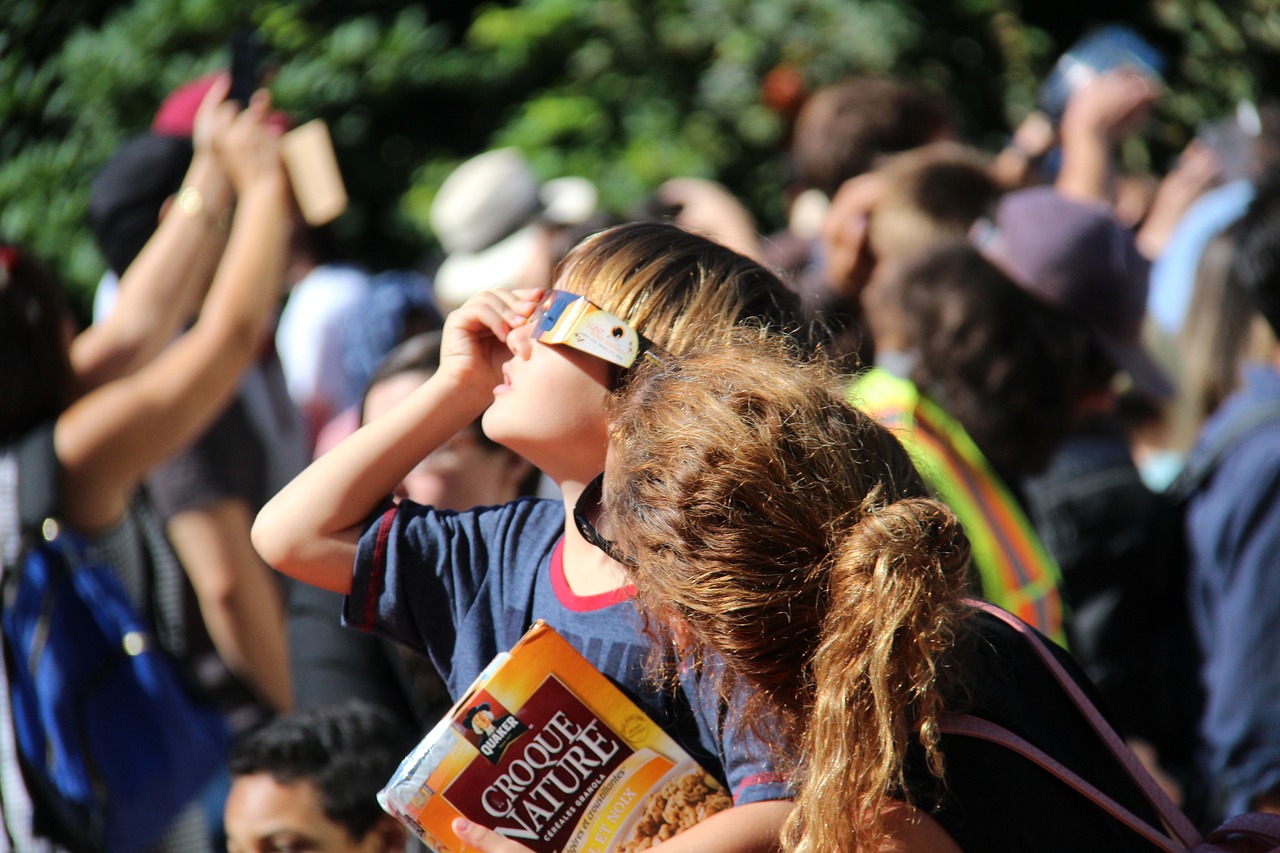Solar eclipses: when and how they can be observed and photographed
A solar eclipse is a beautiful astronomical phenomenon that has attracted and mesmerized people since ancient times. Today we have learned enough about its nature to realize: it is the moon that shuts out all or part of the sun from the eyes of those on earth. We no longer think it was a giant whale that swallowed the sun, nor do we fear that it will never shine again. But the phenomenon itself continues to attract.
One of its main features is also the rarity of solar eclipses. It is extremely rare to observe an eclipse in one and the same part of the planet, and not every year there is at least one total eclipse of a luminary on the whole Earth.
That’s why I decided to tell you a little about this phenomenon from a traveler’s and photographer’s point of view. We will understand when and how you can observe the eclipse, how to photograph and video record it all.
Types of eclipse
As much as I would like to be without theory, there is no way out of it. It is necessary to understand some basics in order to read the material below with understanding.

So, an eclipse of the sun is divided into:
- total – an eclipse in which at least at one point on the planet it is possible to observe complete overlapping of the solar circle by the moon;
- private (partial) – only a partial overlap of the sun can be seen everywhere;
- annular – a total eclipse in which the Moon is at a greater distance from the Earth, due to which visually the Moon passes over the solar disk, but does not cover it entirely. A ring of the uncovered part of the Sun can be observed around the Moon in the maximum phase.
Preparation
This short but important point is fundamental as with many other photo hunts or trips: lunar eclipses, iridium flares, northern lights and simply the milky way. The point is to make sure that the conditions that will accompany observing and/or shooting are acceptable.
The most important thing is to realize, will the eclipse even be visible where you will be? The best resource in my opinion would be the section on Time and Date.

By selecting the desired eclipse from the list of eclipses for the next century, we open the detailed information about it, where, among other things, there is an animation “Eclipse Shadow Path”, which perfectly shows – where and at what time, in what phase a particular eclipse will be observed.
Another great tool on the same site is to search for eclipses by location. Here we select the city for which we want to search and get a list of all solar and lunar eclipses that will be observed in this location. And going to one of them we will see not only the above-mentioned animation, but also such details as: the angle of the sun, the time of the beginning and end of the observation of the eclipse in local time, as well as much more.

Then there’s the weather. You can find out the exact forecast only just before the event, but thanks to the weather service Kwidoo Travel you can easily see what temperature and cloudiness on average during this period, and closer to the eclipse – look at Accuweather or Gismeteo (how long have I been planning to find the best weather service and keep putting it off…. Oh, this procrastination!).
And another point that is often forgotten, but which can easily break plans – visibility and cloud cover. If the sky is covered with clouds, you are unlikely to see the eclipse.
You can use the cloud map on Wind to do this. Here you can see not only the real-time map, but also the forecast for the coming week. I don’t know about a week, but for 1 – 2 days everything is relatively accurate. I select the date, time and location I want to make sure the sky will be clear.

In addition, we look for a suitable place to observe and shoot. You can use the corresponding instructions from the article “How I study the terrain before shooting”, the principle is similar.
If you’re convinced that you’ll be able to observe the eclipse in your city, or have already bought tickets to where it’s most visible – then read on!
How do you watch an eclipse of the sun?
Looking at a bright flash of light is not a good idea. For example, it is not a good idea to look at welding. Of course, contrary to popular belief, it is unlikely that you will go blind for life, but it will be very easy to go out of action for a few days.
Looking at the sun with unprotected eyes, and even for a long time, is a silly idea. Therefore, we have to look for a way to admire the eclipse without harming our health.
The only time it is allowed to be observed with the naked eye is during a total eclipse, at the moment when the moon completely covers the solar disk.
Contrary to popular belief, the use of sunglasses cannot protect your eyes when viewing the eclipse. It is also forbidden to look through a telescope or the viewfinder of an SLR camera, as well as other optics without a special filter.
It is recommended that you choose one of the following methods:
- Special observation glasses. They are similar to those given out in movie theaters and sold on the Internet at every turn as solar eclipse dates approach. They have protective filters instead of lenses.
- Protective filters or film, as well as homemade glasses made of them. Where to buy this film you can read a little below, in the chapter devoted to photography of this phenomenon.
- Projection through a pinhole. We make a small hole in a piece of thick cardboard or paper and then let the light from the sun shine through it onto any surface. It is necessary to observe the projection, not the sun itself.
- Using improvised means, like welding glass or smoked glass, film from old floppy disks, etc. Not recommended, but sometimes practiced.
When buying ready-made goggles, it is worth making sure that they are ISO certified. Otherwise they may not provide adequate protection.

Certified glasses on Amazon cost up to 10 dollars for 5 pieces, and the film – less than 10 dollars, which is enough for a dozen. So don’t skimp.
How to photograph a solar eclipse
What kind of camera do you need?
Immediately I hasten to disappoint owners of smartphones with sophisticated cameras – they will not help you. Here you need a camera, even a soap-ultrazoom with manual settings.
The best choice would be a DSLR or Mirror-less camera.
Choosing a lens
It is necessary to shoot the eclipse to be able to make out what is happening in general with the help of telephoto lenses, and give preference to lenses with a focal length of 100 mm and above.
If you want to accentuate the solar disk, capture the different phases of an eclipse, Bailey’s necklace or diamond rings – then you need to work with a prime lens of 300mm or more.

It should be noted that cameras of budget and semi-professional range with cropped sensor in this case win over their full-frame counterparts due to the fact that at the same focal length the image will be larger.
If the lens is not too “long-range”, you can use a teleconverter, but it degrades the image quality.
Tripod
When taking pictures of the eclipse, it is important to keep the camera as still as possible, so you should get a reliable, stable and heavy tripod. If there is a special hook at the bottom, you can also hang your backpack there to make it heavier.
Protective filter
Looking at the sun is not only bad for your eyes, but also for the light-sensitive sensor of your camera. For this reason, you should wear a protective filter on the lens.
The best, easiest and cheapest way is to make one yourself from specialized film designed for observing through a telescope according to these instructions.
AstroSolar Baader film is quite common in our countries. Baader Planetarium AstroSolar Photo ND3.8 filter is what we need in our case. This “pleasure” costs about 9 dollars for a 10×10 cm sheet, which is enough for most lenses.
Camera settings
The camera is set to manual mode. I shoot only in RAW.
Focus to infinity. If your lens does not have manual focus control or an appropriate scale, focus automatically on a star or distant contrasting object, then turn autofocus off.
ISO, shutter speed and aperture are best selected in advance. On a sunny day, use a filter, take a few test shots and find the optimal values.

I do the following: I set the aperture to f/9 to avoid blurring, ISO – 100 (the minimum on my camera). And then I play with shutter speed. For beginners you can shoot in aperture priority mode, then the shutter speed will be selected automatically.
Most shooting is done at f/9, 1/200 to 1/500, ISO 100.
In this way I find the best values with which to shoot through the filter.
The second nuance is the settings prepared on the camera for the moment when the sun will be completely covered and the filter will need to be removed for a while. I have never been able to guess with it, so I shoot based on my gut and experience.
Don’t forget to charge your camera and take spare batteries, memory card. They may come in handy at the most crucial moment.
Chic for beginners and professionals alike will be the table that is walking around on the internet on calculating the right exposure when shooting different phases and types of solar eclipses.
In the near future I will make a translation into Russian. The original is in the author’s textbook on solar eclipse photography (in English).
A lens with a focal length of 80 mm or more will be sufficient for shooting the eclipse in the landscape. It is possible to work with smaller ones, but on them, and even more so with wide-angle ones, the sun will turn into a small dot and it will be very difficult to view the eclipse.
The nearest solar eclipses
2024
April 8
A total solar eclipse lasting 4:28 minutes. It will be visible in Mexico, the central United States and Eastern Canada. Most of North and Central America will enjoy only a partial eclipse.
Oct. 2
The 7:25 minute annular eclipse will be observed by residents of southern Chile and Argentina, while the private eclipse will be observed in the Pacific Ocean and southern South America.
2025
March 29.
The first eclipse of 2025 is a private eclipse. It will be observed in northwest Africa, Europe and northern Russia.
Sept. 21.
Another private solar eclipse will take place in the fall of 2025. It will be observed in the Pacific Ocean, as well as New Zealand and Antarctica.
Answers to Frequently Asked Questions
There may be 2 to 5 solar eclipses on Earth, but total or annular eclipses may not be seen for more than two years in a row.
Scientists have long ago learned to calculate the date and exact time of the next eclipse. For example, you can see the list of such eclipses for 2024 – 2025 on our website.



Leave a Reply
Want to join the discussion?Feel free to contribute!